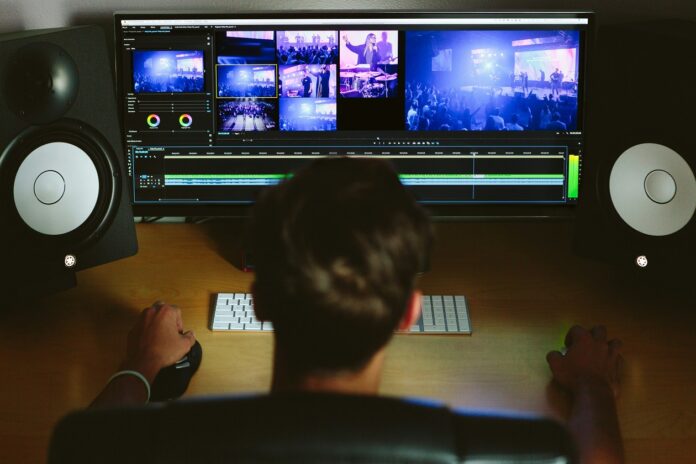Have you ever wondered how ordinary footage transforms into captivating videos? The secret lies in video editing, where creativity meets technique. Beginners often feel overwhelmed by the many tools, effects, and styles available.
Yet, video editing does not have to be complicated or intimidating. With the right approach, anyone can make videos that look polished and professional. Small steps and consistent practice lead to great results.
This guide shares simple and effective tips to help beginners master video editing with confidence. Keep on reading!
Start with the Right Editing Software
Figure out which program works best for you before you do anything else. New users should find tools that are easy to use and have lots of useful features.
Some programs, like Adobe, are great for people who are just starting. You can also get professional results for free with some types of programs. You should choose software based on how well you know it and what you want to do with it.
It can help you feel more at ease to start with simple tools before moving on to more complicated ones. It can help to try out different systems to find the one you like best. Having a strong base makes learning a lot easier and more fun.
Learn the Basics of Cutting and Trimming
Cutting and trimming are the heart of video editing. This process allows editors to remove unnecessary parts and highlight the best moments. A clean cut keeps the audience engaged and prevents videos from dragging on.
Timing is important, as even a few seconds can change the pace completely. Many software options make trimming easy with simple drag-and-drop tools. Beginners often practice by learning to cut a video online, as it helps sharpen their skills without installing heavy programs.
Once mastered, trimming creates smooth and natural transitions. Strong basics ensure every edit feels intentional and professional.
Organize Your Files Before Editing
Staying organized saves time and keeps you from getting frustrated while editing. Sorting things into groups for music, pictures, and video clips helps. Labeling files correctly makes it easier to find specific photos when you need to.
Some newbies don’t realize how much footage they can accumulate during a job. Documents that are not arranged correctly can slow down work and cause mistakes. A straightforward method makes editing go more smoothly.
Additionally, organizing keeps you from losing important clips or deleting important parts by mistake. Clean workspaces let editors focus on being creative instead of looking for files.
Use Transitions Wisely
Transitions can make or break a video. Beginners often feel tempted to use flashy effects between every clip. However, too many transitions can distract the audience.
Simple fades, cuts, or dissolves usually create the most professional look. A smooth transition should feel natural, not forced. The goal is to guide viewers from one scene to the next without breaking the flow.
Testing different options helps identify which transition fits the mood best. Subtlety is often more effective than over-the-top effects. Balanced use of transitions elevates a video’s overall quality.
Add Music and Sound Effects Carefully
Sound is just as important as visuals in video editing. The right background music can set the tone and create emotional impact. Sound effects add realism and make scenes more engaging.
Beginners should ensure that music does not overpower dialogue or important audio. Adjusting volume levels helps maintain clarity. Choosing royalty-free tracks avoids copyright issues.
Matching sound with visuals creates a stronger storytelling experience. Experimenting with different sounds can reveal how audio shapes a viewer’s feelings.
Focus on Storytelling Through Editing
Every video should tell a story, no matter how short it is. Editing helps shape the story by controlling pace and flow. Cutting unnecessary parts keeps the narrative clear and engaging.
Rearranging clips can change the message or mood completely. Beginners should think about what they want viewers to feel at each moment. Even a simple vlog becomes more compelling when edited with a storytelling mindset.
Adding text or captions can highlight key points in the story. Strong storytelling keeps audiences watching until the very end. Editing transforms raw footage into a meaningful experience.
Pay Attention to Color and Lighting
Color and lighting can greatly affect how a video looks. Bright, clear footage feels lively and professional, while dark or dull clips may seem unappealing. Most editing software includes simple tools for adjusting brightness, contrast, and saturation.
Color correction helps fix clips shot in poor lighting. Color grading, on the other hand, creates a specific mood or style. Beginners can start with small adjustments until they feel comfortable.
Matching colors across clips creates a seamless look. Even subtle changes can improve the video’s visual appeal. Good lighting and color adjustments bring life to every project.
Use Text and Titles to Add Clarity
Text and titles guide viewers and make content easier to follow. Titles at the beginning set the tone and give context. Subtitles can help audiences understand dialogue, especially in noisy scenes.
Adding captions also makes videos more accessible to everyone. Beginners should keep fonts simple and easy to read. Consistency in style ensures the video looks neat and professional.
Text should never distract from the main visuals but instead support the message. A well-placed title or caption can improve viewer engagement and clarity. Proper text usage enhances both style and function.
Practice Regularly and Keep Learning
Video editing is a skill that gets better with use. Each job is different and teaches us something new. People who are just starting shouldn’t give up if their first edits aren’t great.
Watching online lessons gives you new skills and concepts. By joining editing groups, new editors can share their work and get feedback. Staying up to date on trends can also help you make movies that look and feel modern.
Editing becomes easier as you do it more often. Editing at a professional level is a steady process that requires ongoing learning.
Improving Your Skills as a Video Editor
If you’re patient, practice, and use your imagination, changing videos will get easier over time. Essential first steps include getting the right tools, learning simple cuts, and staying organized.
Using well-balanced sound effects, smooth transitions, and strong storytelling can bring movies to life. By paying attention to color, writing, and practicing consistently, quality gets even better.
If a beginner follows these tips, their work will quickly become better and look more professional. With practice, video editing becomes more of both a technical and a creative skill.
Did you like this guide? Great! Please browse our website for more!






